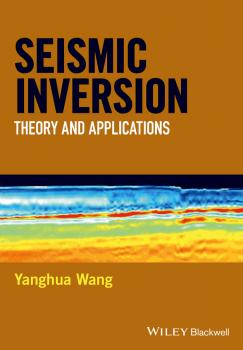ТОП просматриваемых книг сайта:
Yanghua Wang
Список книг автора Yanghua WangАннотация
Seismic inverse Q filtering is a data processing technology for enhancing the resolution of seismic images. It employs a wave propagation reversal procedure that compensates for energy absorption and corrects wavelet distortion due to velocity dispersion. By compensating for amplitude attenuation, seismic data can provide true relative-amplitude information for amplitude inversion and subsequent reservoir characterization. By correcting the phase distortion, seismic data with enhanced vertical resolution can yield correct timings for lithological identification. This monograph presents the theory of inverse Q filtering and a series of algorithms, collected with the following selection criteria in mind: robustness, effectiveness and practicality. The book is written for processing geophysicists who are attempting to improve the quality of seismic data in terms of resolution and signal-to-noise ratio, as well as for reservoir geophysicists who are concerned about seismic fidelity in terms of true amplitudes, true timings and true frequencies. It will also be particularly valuable as a guide for seasoned geophysicists who are attempting to develop seismic software for various research settings. Finally, it can be used as a reference work or textbook for postgraduate students in seismic and reservoir geophysics.
Аннотация
Seismic inversion aims to reconstruct a quantitative model of the Earth subsurface, by solving an inverse problem based on seismic measurements. There are at least three fundamental issues to be solved simultaneously: non-linearity, non-uniqueness, and instability. This book covers the basic theory and techniques used in seismic inversion, corresponding to these three issues, emphasising the physical interpretation of theoretical concepts and practical solutions. This book is written for master and doctoral students who need to understand the mathematical tools and the engineering aspects of the inverse problem needed to obtain geophysically meaningful solutions. Building on the basic theory of linear inverse problems, the methodologies of seismic inversion are explained in detail, including ray-impedance inversion and waveform tomography etc. The application methodologies are categorised into convolutional and wave-equation based groups. This systematic presentation simplifies the subject and enables an in-depth understanding of seismic inversion. This book also provides a practical guide to reservoir geophysicists who are attempting quantitative reservoir characterisation based on seismic data. Philosophically, the seismic inverse problem allows for a range of possible solutions, but the techniques described herein enable geophysicists to exclude models that cannot satisfy the available data. This book summarises the author’s extensive experience in both industry and academia and includes innovative techniques not previously published.


